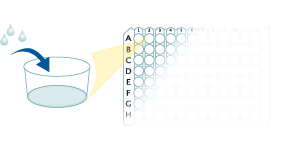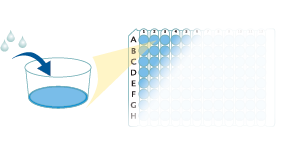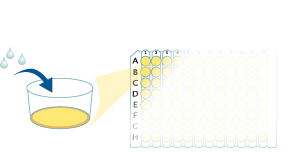 全部商品分类
全部商品分类



 下载产品说明书
下载产品说明书 下载SDS
下载SDS 用小程序,查商品更便捷
用小程序,查商品更便捷


 收藏
收藏
 对比
对比 咨询
咨询Product Summary
Recovery
The recovery of mouse OPN spiked to three levels throughout the range of the assay was evaluated.
| Sample Type | Average % Recovery | Range % |
|---|---|---|
| Mouse Cell Culture Supernates (n=7) | 98 | 87-106 |
| Rat Cell Culture Supernates (n=7) | 93 | 82-107 |
Linearity
Scientific Data
Assay Procedure
Refer to the product- Prepare all reagents, standard dilutions, and samples as directed in the product insert.
- Remove excess microplate strips from the plate frame, return them to the foil pouch containing the desiccant pack, and reseal.
- Add 50 µL of Assay Diluent to each well.
- Add 50 µL of Standard, Control, or sample to each well. Cover with a plate sealer, and incubate at room temperature for 2 hours.
- Aspirate each well and wash, repeating the process 4 times for a total of 5 washes.
- Add 100 µL of Conjugate to each well. Cover with a new plate sealer, and incubate at room temperature for 2 hours.
- Aspirate and wash 5 times.
- Add 100 µL Substrate Solution to each well. Incubate at room temperature for 30 minutes. PROTECT FROM LIGHT.
- Add 100 µL of Stop Solution to each well. Read at 450 nm within 30 minutes. Set wavelength correction to 540 nm or 570 nm.





Mouse/Rat Osteopontin (OPN) Quantikine ELISA Kit Summary

Background: Osteopontin/OPN
Osteopontin (OPN), also known as bone sialoprotein (BSP), is a secreted SIBLING family protein that can be variably modified by O- and N-glycosylation, sulfation, phosphorylation, and transglutamination. OPN is widely expressed and is prominent in mineralized tissues. It inhibits bone mineralization and kidney stone formation and promotes inflammation, cell ad¬hesion, and migration. Its expression is upregulat¬ed during inflammation, obesity, atherosclerosis, cancer, and tissue damage and contributes to the pathophysiology of these conditions. The central region of OPN contains RGD and non-RGD binding sites for multiple integrins. Adjacent to the RGD motif is the sequence SLAYGLR (SVVYGLR in human) which serves as a cryptic binding site for additional integrins: it is masked in full length OPN but is exposed following OPN cleavage by multiple proteases in tumors and sites of tissue injury.









